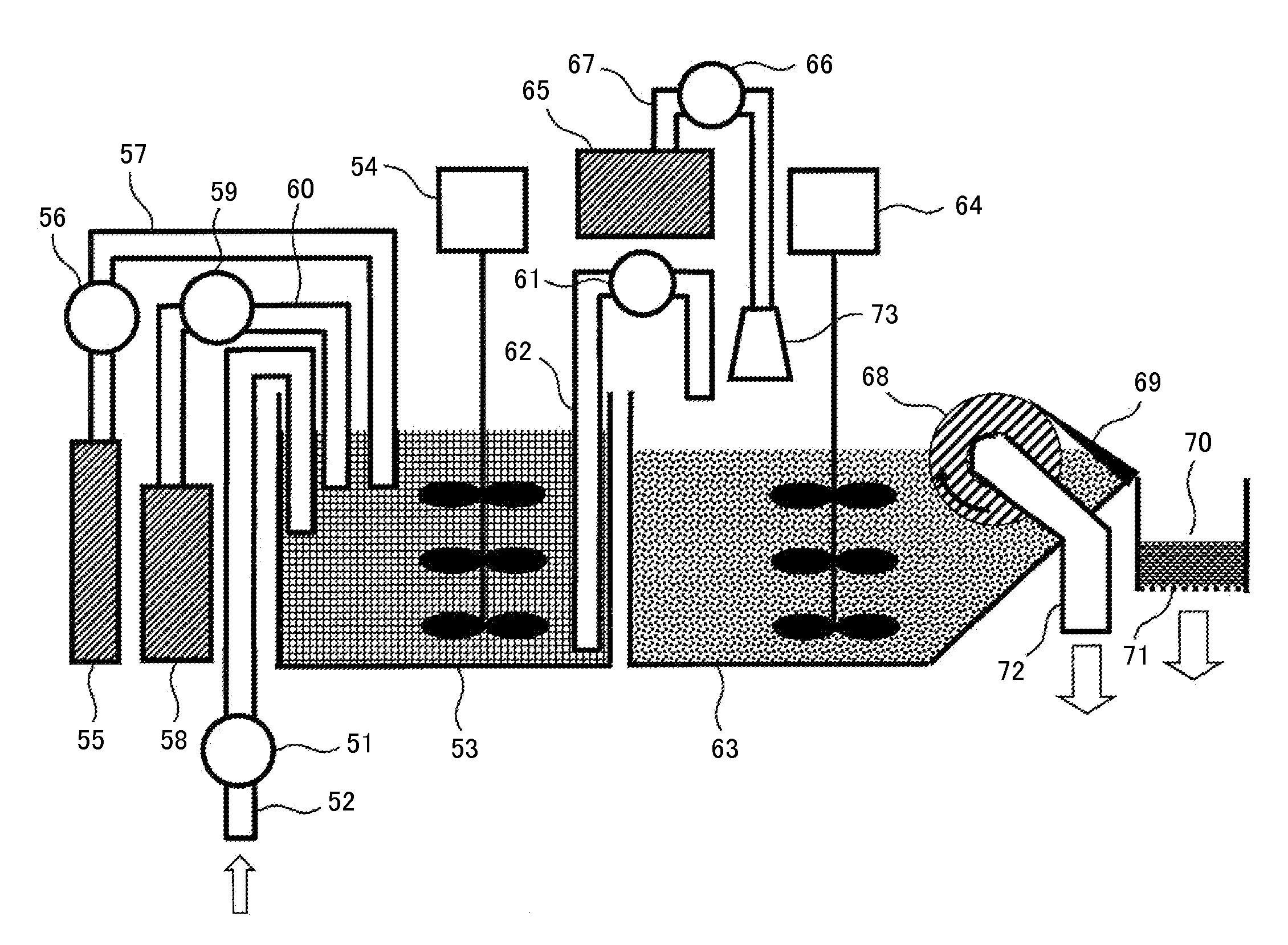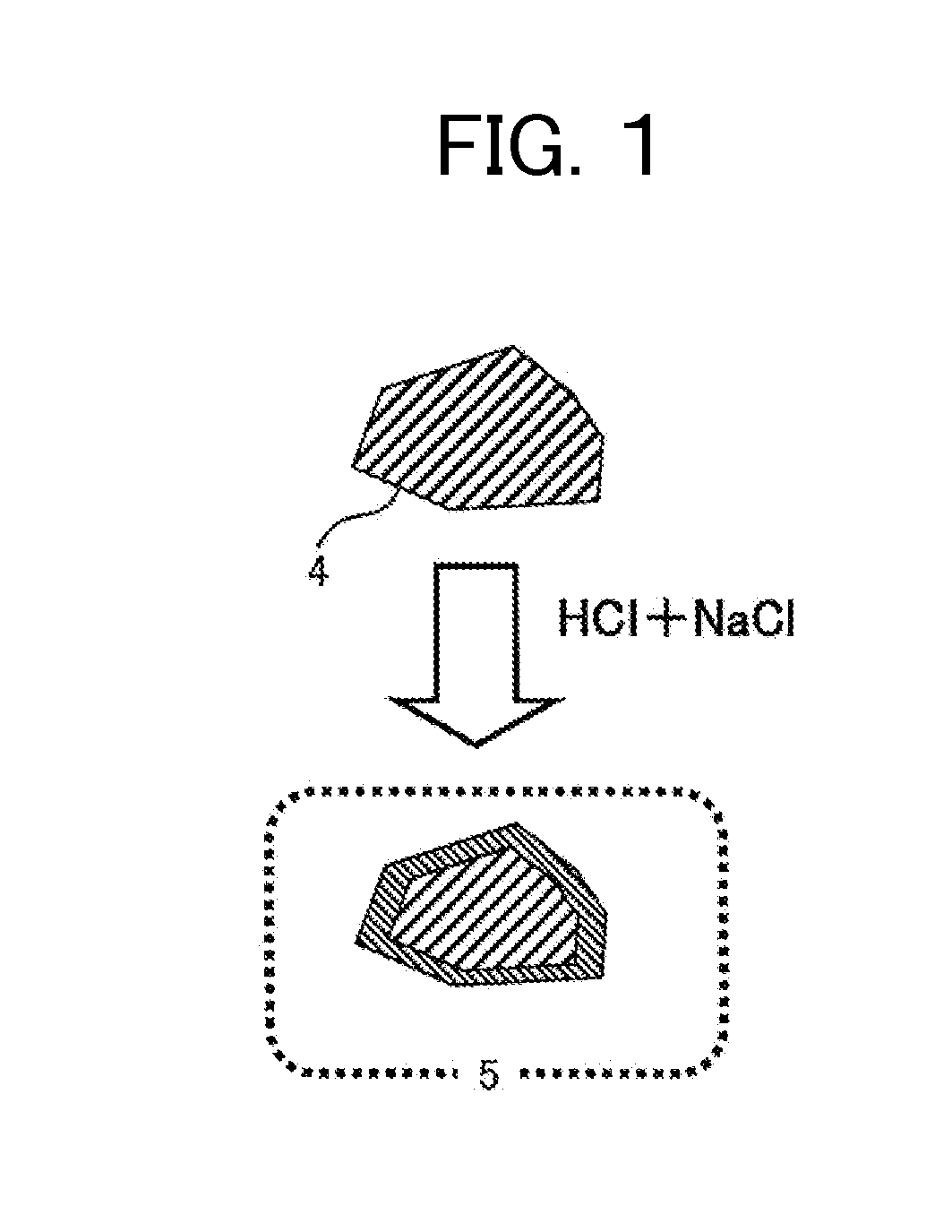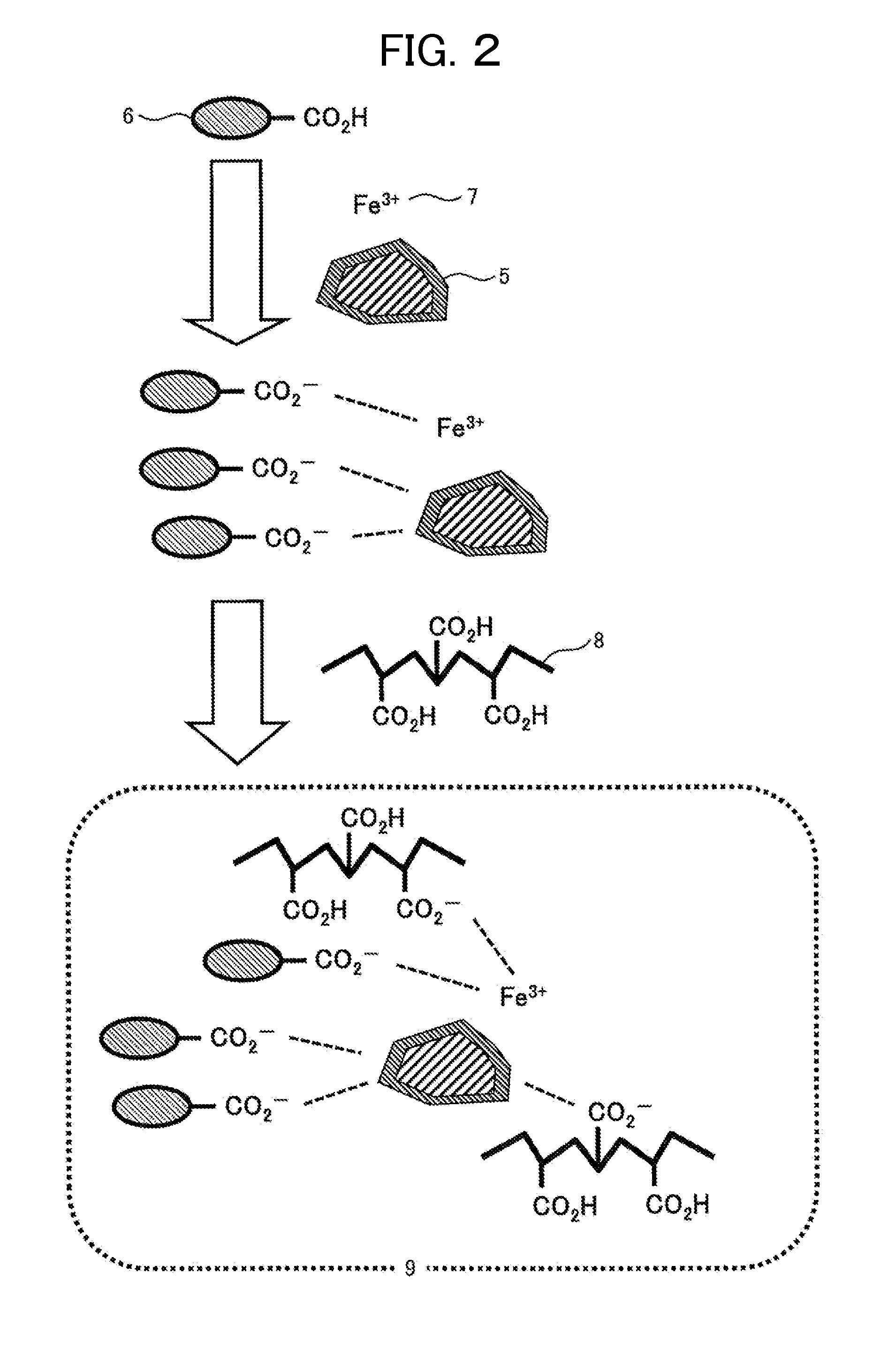Coagulant, coagulation method, and water treatment apparatus
- Summary
- Abstract
- Description
- Claims
- Application Information
AI Technical Summary
Benefits of technology
Problems solved by technology
Method used
Image
Examples
embodiment 1
[0121](1) Magnetic Powder Modification
[0122]Initially, a magnetic powder was modified.
[0123]The modification is performed in the following manner. Initially, a 5 percent by weight hydrochloric acid (65.7 g, 0.09 mmol as HCl) was placed in a vessel containing a magnetic powder (elemental composition: Fe3O4, 2.4 g, 0.01 mmol), followed by stirring for one hour. The hydrochloric acid turned pale yellow and transparent, indicating that iron (Fe) on the surface of the magnetic powder was probably converted into FeCl2 or FeCl3 and dissolved; and that Fe on the surface was probably slightly ionized to allow chlorine ions to be present in the vicinity thereof or to adhere thereto. Next, the magnetic powder was collected by filtration, washed with water, dried under reduced pressure, and thereby yielded a surface-modified magnetic powder.
[0124]The surface of the surface-modified magnetic powder was analyzed by SEM-EDX to identify the presence of chlorine on the surface, in addition to iron a...
embodiment 2
[0137]Magnetic powder modification was performed with hydrochloric acid in a concentration of 2 percent by weight to find that the solution after one-hour stirring appeared colorless and transparent upon visual observation. The magnetic powder was then subjected to filtration, water washing, and drying processes, and the resulting magnetic powder was subjected to a flocculation experiment. Upon collection of the flocs with a bar magnet, a half or more of the entire flocs failed to be collected. Floc recovery was performed using magnetic powders modified with a sulfuric acid solution in a concentration of 4 percent by weight or a nitric acid solution in a concentration of 5 percent by weight to find that a half or more of the entire flocs failed to be collected.
[0138]A flocculation experiment was performed using a magnetic powder modified with hydrochloric acid in a concentration of 3 percent by weight, and flocs were collected with a bar magnet. As a result, the flocs could be colle...
embodiment 3
[0141]Magnetic powder modification was performed with hydrochloric acid in a concentration of 12 percent by weight, and the hydrochloric acid after one-hour stirring appeared yellow and transparent on visual observation. The magnetic powder was then subjected to filtration, water washing, and drying processes, and the resulting magnetic powder was found to have a weight reduced to about half the weight before modification.
[0142]Magnetic powders modified with hydrochloric acids in concentrations of 3 to 11 percent by weight had weights of 90% or more of the weight before modification.
[0143]The results demonstrate that a preferred hydrochloric acid concentration is 11 percent by weight or less for high-yield magnetic powder modification.
[0144]Upon the use of sulfuric acid instead of hydrochloric acid, modification at a concentration of 17 percent by weight or more caused the magnetic powder to be collected at a rate of 50% or less. Modification at a concentration of 16 percent by weig...
PUM
| Property | Measurement | Unit |
|---|---|---|
| Acidity | aaaaa | aaaaa |
| Molecular weight | aaaaa | aaaaa |
| Acidity | aaaaa | aaaaa |
Abstract
Description
Claims
Application Information
 Login to View More
Login to View More - R&D
- Intellectual Property
- Life Sciences
- Materials
- Tech Scout
- Unparalleled Data Quality
- Higher Quality Content
- 60% Fewer Hallucinations
Browse by: Latest US Patents, China's latest patents, Technical Efficacy Thesaurus, Application Domain, Technology Topic, Popular Technical Reports.
© 2025 PatSnap. All rights reserved.Legal|Privacy policy|Modern Slavery Act Transparency Statement|Sitemap|About US| Contact US: help@patsnap.com



